5 Tricky Lowercase Letters
Today we have lots of free printables for you that help kids recognize the typewritten forms of various lowercase letters!
You’ve probably noticed that some lowercase letters look different when they are handwritten than when they are typewritten. For example, take a look at lowercase letters A and G below.

Lowercase letters “q”, “t”, and “y” can be tricky for beginning readers, too. Fortunately, hands-on activities are an easy way to help your child become familiar with the different forms of these letters.
Fun Practice for Tricky Lowercase Letters!
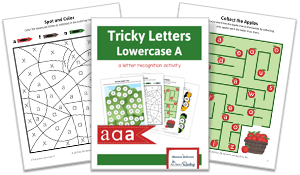
Tricky Lowercase Letter A
A typewritten lowercase A looks very different than a handwritten lowercase A. Help your child learn to recognize three different styles of this tricky letter.
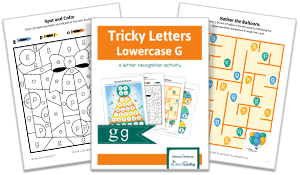
Tricky Lowercase Letter G
A handwritten lowercase G has an open loop or “fishtail,” while many typewritten forms have a closed loop. These activities will help your child recognize both!
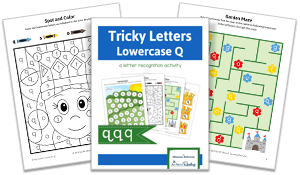
Tricky Lowercase Letter Q
Depending on whether it is handwritten or typewritten, lowercase Q can have a descender with a curvy or straight tail…or no tail at all! That’s extra tricky!
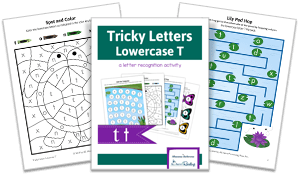
Tricky Lowercase Letter T
Lowercase letter T can also be written different ways. Most handwritten forms have a straight stick, while most typewritten forms have a bit of a curl at the bottom.
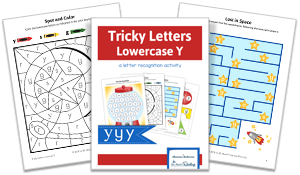
Tricky Lowercase Letter Y
A typewritten Y is usually straight. A handwritten Y can be either straight or curvy. Can your child recognize all three?
Recognizing the various forms of lowercase A, G, Q, T, and Y is part of letter knowledge, one of the Big Five Skills that help kids prepare for learning to read.
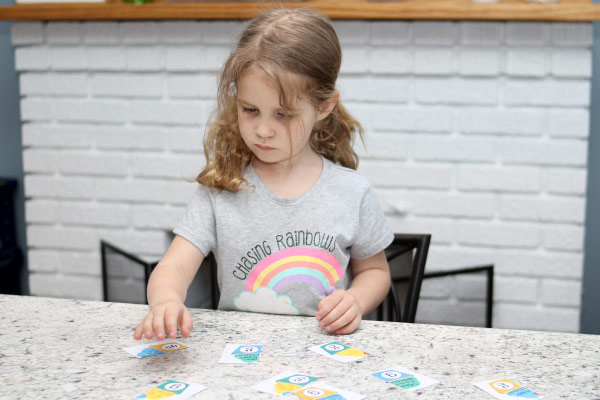
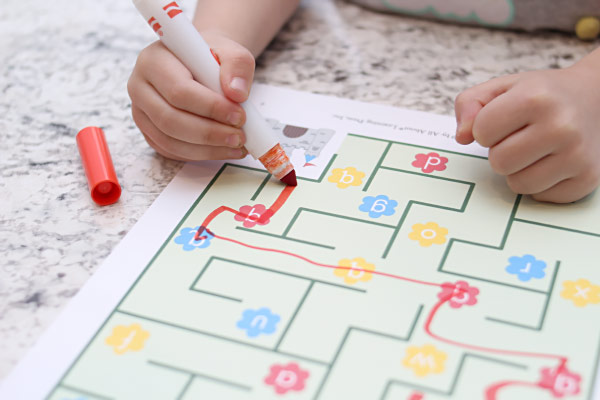
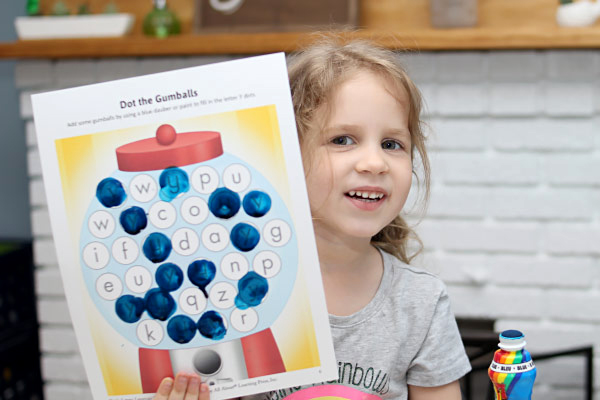
Are you wondering if your child is ready for formal reading instruction? Download this checklist to measure your child’s reading readiness.
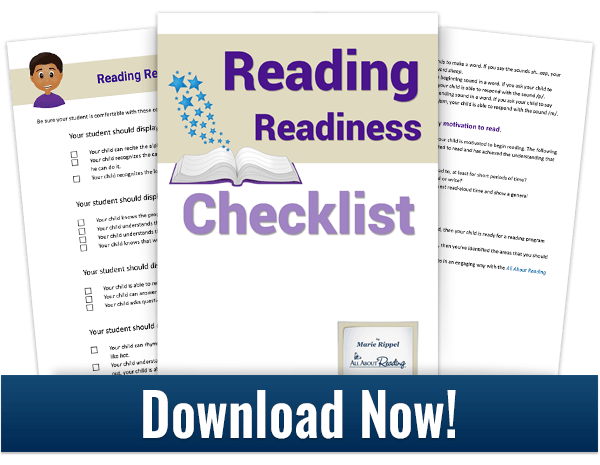
Let me know in the comments below if your child enjoyed these letter recognition activities!




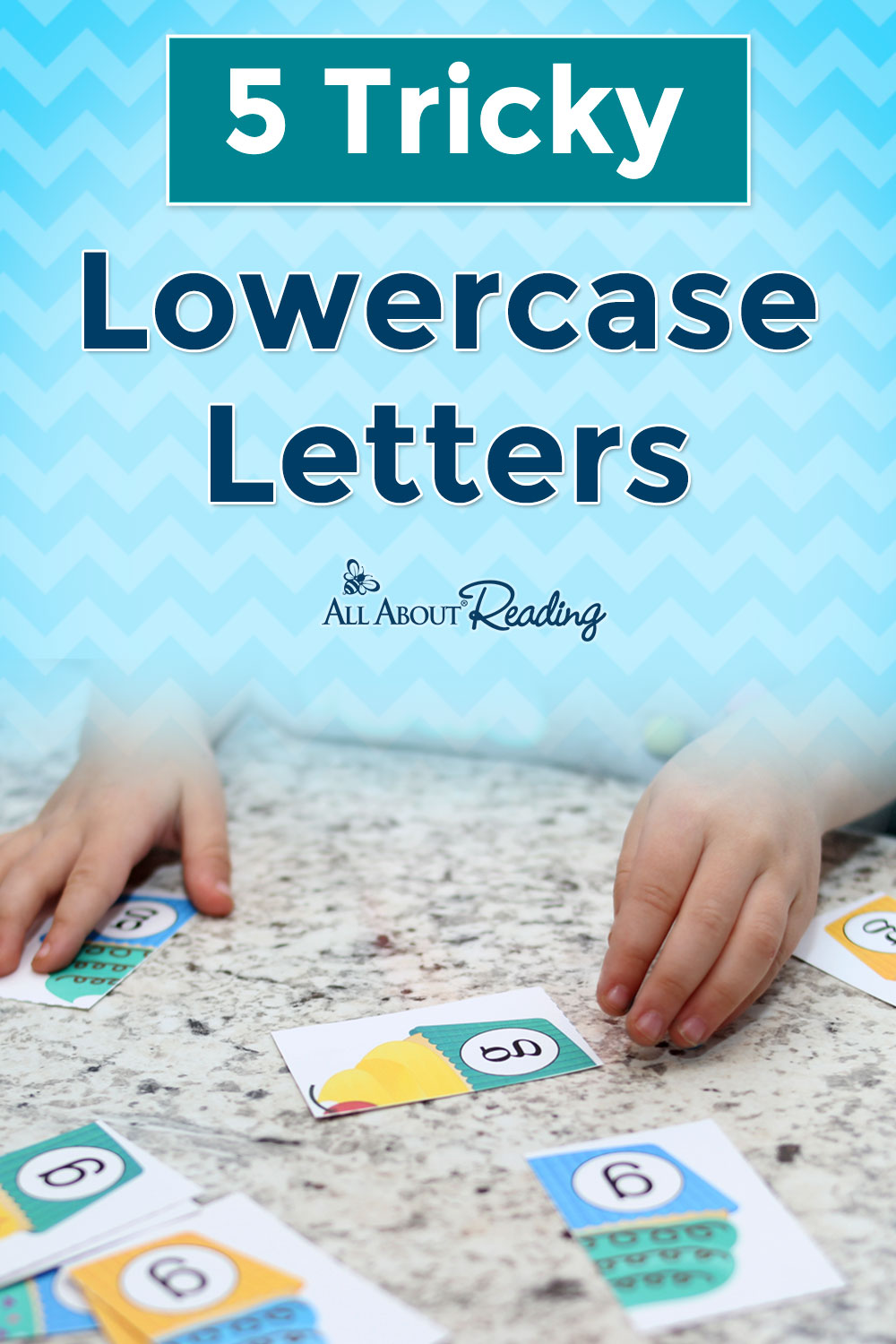










Maya Lo
says:My son is having trouble with the lower case letters. Thank you for these resources!
Robin
says: Customer ServiceYou’re welcome, Maya Lo!
Cess
says:Thank you for these! Finally, someone made a variety of activities to show those tricky letters.
Robin
says: Customer ServiceYou’re welcome, Cess! I hope these are helpful.
Winnie
says:Thank you ,these resources are so informative.
Robin
says: Customer ServiceYou’re welcome, Winnie!
Naomi B
says:Thank you for these sheets-looking forward to seeing how my son does with them as we are still in the tricky letters stage of things!
Robin
says: Customer ServiceYou’re welcome, Naomi!
Michelle
says:Thank you so much for your free resources. My son had wonderful success with his Pre-Reading program. I am looking forward to continuing his success with these specific lowercase letter fun games. He absolutely loved all the games with Ziggy in Pre-Reading. These letter games will help him with his dyslexia and letter recognition. Thank you for caring and sharing these extra resources.
Robin E.
says: Customer ServiceYou are so welcome, Michelle! It’s wonderful to hear that the Pre-read program is working so well for your son and that he enjoys it too!
Candice Layfield
says:These free resources are amazing! Thank you!
Robin E.
says: Customer ServiceYou are very welcome, Candice! Glad you like the resources!
Brianna
says:Thanks for the intro to All About Reading! Brianna
Diana
says:Thank you for these resources. My 4 year is keen to read and the various fonts for these letters always confuse him. It’s great he can see them all in one place together.
Robin E.
says: Customer ServiceYou’re welcome, Diana! I’m glad these can help your child master these tricky letters!
Jessica
says:Great read! I believe this will help me teach my daughter the difference between! Thanks!
Robin E.
says: Customer ServiceThank you, Jessica! I’m glad this will be helpful!
sonia
says:I discover all about reading from a friend and my little girl just did wonderful and she is ahead of her spelling, writing and reading level. <3
Robin E.
says: Customer ServiceI’m so excited to hear that your daughter is doing so very well, Sonia! Thank you for sharing!
Bailey Winters
says:My son is 2.5 and so curious about letters and their sounds. I hadn’t even thought about how fonts could make it even harder to recognize letters.
Carol
says:Wow!! What a straightforward way to unlock something that adult vision take for granted. Thanks for reminding us that that can be tricky for children.
Robin E.
says: Customer ServiceYes, great point, Carol! It’s easy as an adult to forget all the little steps and details it took to learn something.
Jessica
says:Well this was a surprising find! So happy I stumbled upon it!!
Nicole
says:These look amazing and fun!! Can’t wait to try for my son!
Robin E.
says: Customer ServiceThank you, Nicole! I hope it’s a fun learning activity for your son.
Ginny Ivey
says:This is so helpful! I actually just noticed my 6yo pausing when she was reading different books. I never thought to assume that she knew all the various forms of a letter.
Robin E.
says: Customer ServiceI’m glad this was helpful, Ginny!
Crystal
says:This looks great! Fun and engaging!
Robin E.
says: Customer ServiceThanks, Crystal!
Ashley D Jaggars
says:Thank you for sharing these hints. I’m excited to start using them with my children.
Robin E.
says: Customer ServiceYou’re welcome, Ashley!
Amber Robinson
says:Thank you for the resources. My son has thrived with AAR
Robin E.
says: Customer ServiceI’m happy to hear your son is doing well with All About Reading, Amber!
Toni
says:I’ve been reading for so many years that I wouldn’t have even thought of this issue! So thank you for the wonderful reminder that typewritten letters can vary in appearance! My son is just learning to read, and I can see how it would be a very good idea to do these activities with him so he doesn’t get hung up on the different appearances. Thanks!
Robin E.
says: Customer ServiceToni,
I’m glad this could remind you of a difficulty a new reader may have that may not be apparent to those of us that have been reading for so long! You’re welcome.
Olivia
says:Thank you for the excellent free resources!
Robin E.
says: Customer ServiceYou’re welcome, Olivia!
Nicole R
says:Thank you for the awesome resource! This is going to be very helpful.
Robin E.
says: Customer ServiceI’m glad this will be helpful for you, Nicole! You’re welcome.
Zhaleh George
says:My son often mistakes these letters for each other. I’m excited to have him practice with these! :)
Robin E.
says: Customer ServiceI hope this is very helpful for your son, Zhaleh!
Christal
says:Love these
Robin E.
says: Customer ServiceThank you, Christal.
Neysa
says:My daughter had a lot of trouble with b and d.
Robin E.
says: Customer ServiceThat is a common difficulty for many children, Neysa. We address b and d confusion in our How to Solve Letter Reversals article. However, if you need additional help, please let me know.
Cindy
says:Wonderful activities to help with lowercase letter case recognition! Thank you for these resources!
Robin E.
says: Customer ServiceYou’re so welcome, Cindy!
Jane K
says:I like how you can teach little ones that there are different ways to write letters. I believe it can help when teaching different forms of foreign language letters too! Every language has its own code or alphabet and it’s fun to learn!
Robin E.
says: Customer ServiceGreat point, Jane! Thank you.
Erica Wylie
says:We’ve been using AAS for several years and I appreciate how each lesson focuses on a specific phonogram.
Robin E.
says: Customer ServiceThank you, Erica.
Ali M
says:Thank you for these resources!
Robin E.
says: Customer ServiceYou’re welcome, Ali!
Allie G
says:Great resources
Robin E.
says: Customer ServiceThank you!
Tracy
says:These would help my early reader so much!